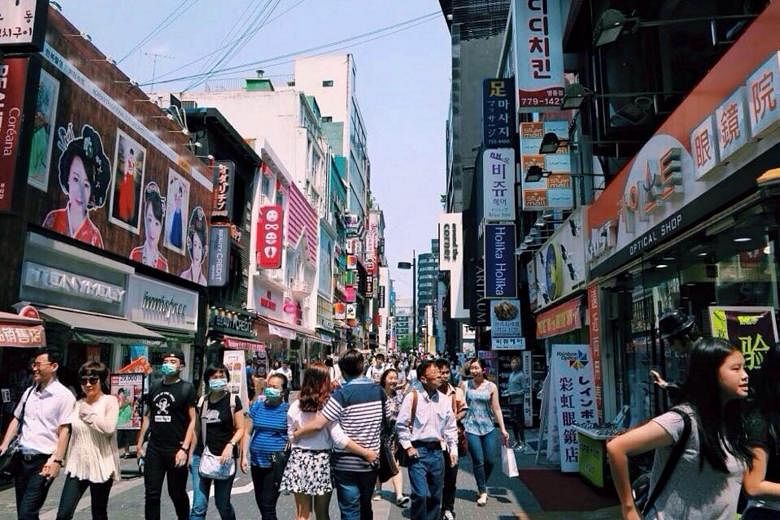From Swedish furniture stores to US investment banks, China's copycats have long looked to the West for ideas. Now their gaze is shifting closer to home.
Chinese-run stores that imitate South Korean retail outlets are popping up across Asia as copycat businesses from the world's most populous nation seek to ride Seoul's soaring popularity in the region.
From Vietnam to the Philippines to Australia, dozens of such stores have appeared in the past two years, with the awkward use of Korean often the only giveaway about their true origins.
The development will be particularly galling for Seoul, given that South Korean products and companies have been pushed out of the Chinese market in recent years as a result of a simmering political spat with Beijing.
With blaring K-pop, pastel colours and distinctive Korean hangul signage, the stores could seemingly blend seamlessly into any of Seoul's teeming retail districts. Even the designs of the products - typically personal care items - and the store names echo those of popular Korean brands. The merchandise as well as the management, however, hail from China.
"Mumuso is a Korean brand with the focus on fashion," says one Shanghai-based company, which features women dressed in traditional Korean clothing on its website.
In Vietnam, almost 100 outlets mimicking Korean stores with names such as Mumuso or Ilahui have opened in the past two years, according to a study by the Korea Trade-Investment Promotion Agency.
In the Philippines, Mumuso alone has opened 38 branches in the same period. A staff member in a Manila branch claimed it is a Korean company, although a company address in Seoul was found to be bogus. The company did not respond to inquiries.
Such stores appear to be attempting to cash in on South Korea's growing cultural cachet. In recent years, South Korean music and movies have boomed in popularity, particularly in South-east Asia.
Exports of Korean cultural content, including music, films, books and games, are forecast to be worth US$7.3 billion (S$9.9 billion) worldwide this year - an almost 9 per cent increase from last year - according to an estimate from the Korea Creative Content Agency.
Korean cosmetics, in particular, have soared in popularity in recent years, with global sales increasing to US$4 billion last year from US$451 million in 2009.
"When you say South Korean, you think high-quality beauty products. I mean, look at their skin," said Ms Meily Tabula, a shopper in a Manila branch of Mumuso, who mistook the store for a Korean brand.
Ms Haydee Gopez, a self-confessed fan of Korean pop music, says the branding attracted her to the store. "I went in because of the Korean vibe," she said.
South Korea's relations with the region have benefited from a lack of historical baggage - a problem that afflicts Japan - and the absence of territorial disputes, which plague China's reputation in South-east Asia.
South Korean companies also have a strong presence. Samsung is Vietnam's largest foreign investor and employs more than 100,000 people across the country.
Yet South Korean trade officials appear resigned to copycats, at least in Vietnam.
"It is almost impossible to completely block the circulation of knock-off products which could infringe on Korean companies' intellectual property rights," said a report by the trade agency. "The concept of intellectual property right is still in its infancy in Vietnam, so it would be hard to crack down on."
FINANCIAL TIMES

